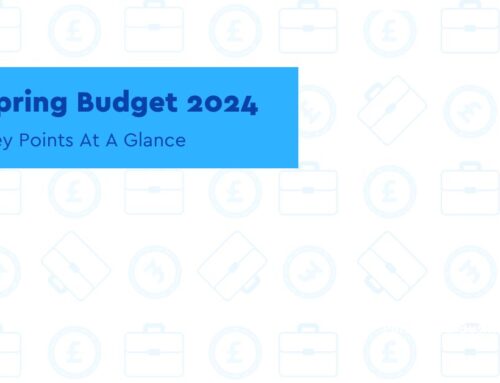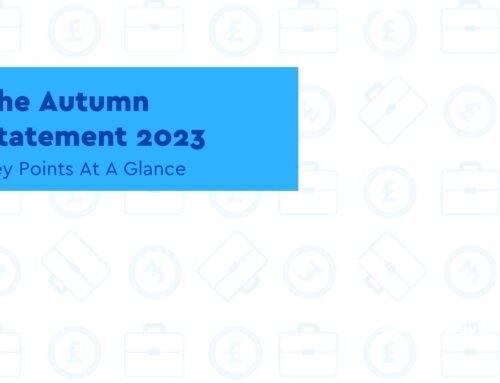News – Capital Gains Tax
Treasury to maintain existing capital gains tax rates
Key Points
- The Treasury said changes to the rate of capital gains tax or annual allowances are not under consideration
- The Government accepted smaller changes including the creation of a central hub for reporting CGT data
The Treasury has dismissed recommendations from the Office of Tax Simplification (OTS) to align capital gains tax with income tax, instead accepting a handful of technical changes to the tax.
Lucy Frazer, financial secretary to the Treasury, said changes to the rate of capital gains tax or annual allowances are not under consideration as “these reforms would involve a number of wider policy trade-offs” that require “careful thought”.
Capital gains tax applies at rates varying between 10% and 28%, depending on the type of asset being disposed of and the vendor’s marginal type of income tax.
Responding to the OTS’ initial recommendation to raise capital gains tax rates, Robert Colvile, director of the Centre for Policy Studies, said in November 2020:
“Raising capital gains tax will discourage people from starting businesses, make it harder for startups to scale up, impede entrepreneurship and damage economic dynamism and national prosperity.”
The Government accepted five out of 14 smaller technical changes that the OTS had previously suggested, including:
- The creation of a central hub for reporting and storing capital gains tax data
- An extension to the ‘no gain, no loss’ on separation and divorce
- An expansion of rollover relief to cover land and buildings under compulsory purchase orders
What you pay it on
You pay Capital Gains Tax on the gain when you sell (or ‘dispose of’):
- Most personal possessions worth £6,000 or more, apart from your car
- Property that’s not your main home
- Your main home if you’ve let it out, used it for business or it’s very large
- Shares that are not in an ISA or PEP
- Business assets
These are known as ‘chargeable assets’. If you sell or give away crypto assets (like cryptocurrency or bitcoin) you should check if you have to pay Capital Gains Tax.
Depending on the asset, you may be able to reduce any tax you pay by claiming a relief. If you dispose of an asset you jointly own with someone else, you have to pay Capital Gains Tax on your share of the gain.
You only have to pay Capital Gains Tax on your overall gains above your tax-free allowance (called the Annual Exempt Amount).
The Capital Gains tax-free allowance is:
- £12,300
- £6,150 for trusts
News – Employers
April 2022 statutory maternity, paternity and sick pay rates published
Key Points
- The rate of statutory maternity pay is expected to rise to £156.66 from April 2022
- The rates normally increase each April in line with the consumer price index (CPI)
The government has published the proposed statutory rates for maternity pay, paternity pay, shared parental pay, adoption pay, parental bereavement pay and sick pay from April 2022.
The current weekly rate of statutory maternity pay is £151.97, or 90% of the employee’s average weekly earnings if this figure is less than the statutory rate.
The rate of statutory maternity pay is expected to rise to £156.66 from April 2022. The increase normally occurs on the first Sunday in April, which in 2022 is 3 April.
Also on 3 April 2022, the rates of statutory paternity pay and statutory shared parental pay are expected to go up from £151.97 to £156.66 (or 90% of the employee’s average weekly earnings if this figure is less than the statutory rate).
The rate of statutory adoption pay goes up from £151.97 to £156.66.
This would mean that, from 3 April 2022, statutory adoption pay is payable at 90% of the employee’s average weekly earnings for the first six weeks, with the remainder of the adoption pay period at the rate of £156.66, or 90% of average weekly earnings if this is less than £156.66.
The weekly rate of statutory parental bereavement pay, which is available to employees on parental bereavement leave, is also topped up from £151.97 to £156.66.
The rates normally increase each April in line with the consumer price index (CPI).
Stephen Simpson, principal employment law editor at XpertHR, said: “It is always good news for employers to have these rates before the end of November. It gives HR plenty of time to prepare updates to their family-friendly leave documentation for the April 2022 increases.
The national minimum wage rates that will apply from 1 April 2022 have already been published – these were included in the Chancellor’s Autumn Budget and Spending Review last month.”
The rate of statutory sick pay is also expected to increase from £96.35 to £99.35 on 6 April 2022.
To be entitled to these statutory payments, the employee’s average earnings must be equal to or more than the lower earnings limit. The lower earnings limit goes up from £120 to £123.
News – R&D Relief
Government sets out changes to R&D relief
Key Points
- To improve compliance, the Government will require claims for R&D reliefs to be made digitally
- The changes to R&D tax reliefs will come into effect from April 2023
Following a consultation on research and development (R&D) relief, the Treasury has set out a number of changes, some of which Chancellor Rishi Sunak first introduced in his Autumn Budget speech on October 27, 2021.
During his speech, Sunak announced reforms to R&D tax reliefs would reflect modern research methods by expanding qualifying expenditure to include data and cloud costs and only award projects carried out in the UK.
The Treasury report on R&D confirmed these policies detailed how datasets and staffing costs for the creation of datasets will also qualify for relief.
Companies that subcontract R&D activity to a third party will only be able to claim relief for expenditure where that party performs the work within the UK.
If a company subcontracts work for performance overseas, it won’t be able to claim R&D tax reliefs on that expenditure, but will still be able to deduct those costs from its taxable profits, the Treasury’s report confirmed.
The change comes after UK companies claimed tax relief on £47.5 billion of R&D expenditure in 2019 while only carrying out £25.9bn of privately financed R&D in the UK.
To improve compliance, the Government will also require claims for R&D reliefs to be made digitally, to be filled in more detail and endorsed by a named senior officer of the company, while companies will need to inform HMRC that they plan on making a claim.
The changes to R&D tax reliefs will come into effect from April 2023.
News – Business Economy
Booster for business investment needed to sustain the recovery
Key Points
- Household spending is set to increase by 7.6% in 2022 and 3.1% in 2023 as real incomes recover
- The CBI is forecasting 6.9% growth in GDP over 2021 and 5.1% in 2022
The foundations for the UK’s economic recovery remain firm despite global supply challenges weighing on growth in the near-term, according to the latest CBI economic forecast.
However, short-term headwinds – including rising costs and shortages – have grown since the business group’s previous forecast in June. Longer-term challenges, notably persistently poor productivity, underline the need for a booster for business investment to support sustainable growth.
The CBI is forecasting 6.9% growth in GDP over 2021 and 5.1% in 2022, revised down from 8.2% and 6.1% respectively. It should be noted that this largely reflects weaker than expected outturn data since our previous forecast. The business group’s forecast expects supply chain frictions to largely dissipate by the middle of next year. Earlier in the Autumn, the Government formed the supply chain advisory group to grip these issues.
Overall, household spending remains the key driver of GDP growth, generating 90% of growth in 2022, and two-thirds in 2023. This is supported by a further improvement in real income, and households running down excess savings accumulated during the pandemic.
The resilience of the UK’s labour market has been a real success story, thanks largely to the government’s Job Retention Scheme, which helped stave off potentially large-scale job losses. Continued employment growth over the next couple of years also supports household spending.
Business investment appetite has recovered somewhat and, spurred by continual economic growth, it rises briefly above its pre-pandemic level at the end of 2022 (growing by 8.2% over the year as a whole). However, this recovery is short-lived, with capital spending falling from mid-2023, as the super-deduction comes to an end and the rise in corporation tax kicks in. As a result, business investment will continue to lag other advanced economies.
The recovery in exports is also expected to be lacklustre, following disappointing growth over this year so far.
The forecast predicts CPI inflation to peak at 5.2% in April next year. It is set to remain above the Bank of England’s 2% target until Spring 2023, which will hit pay packets and offsets some of the positive underpins to consumer spending.
Tony Danker, CBI director-general, said: “The challenge for January 1st is now very clear for the UK economy. Significant headwinds and rising costs of living threaten the extent of recovery and prospects for economic success. These hurdles for firms will provide a major test for Government – can they foster sustainable UK investment and growth?
“The UK’s New Year resolution must be to give firms the confidence to go for growth. We should be raising our sights on the economy’s potential and seizing the moment.
“I know from speaking with firms of all sizes that they have an ambitious investment mindset, and are anxious to implement growth plans. But while intentions have thawed, we’re coming up to a cliff-edge in 2023. The super-deduction is a welcome catalyst, but a one-hit wonder isn’t enough to make up for four decades of underperforming business investment. We must build on its success with targeted measures encouraging the scale of investment we need, particularly in green technologies. A booster for growth is needed to protect and build on our recovery.
“But this isn’t just a challenge for government. It’s also up to businesses to step up and be part of the solution. Investment in technology and skills are among the most important steps firms can take now that will power productivity growth.
“Government has key levers at its disposal to back business: pro-investment and pro-innovation regulation to help build new markets, a competitive tax regime that incentivises business investment across the board and new market-making interventions, for example on clean energy. Getting this mix right will pay dividends over the longer term, jumpstarting the UK’s flatlining productivity and set us on course for a brighter new year.”
Rain Newton-Smith, CBI chief economist, said: “We expect a pretty firm economic recovery ahead, though understandably the emergence of Omicron poses another downside risk to our forecast. Ultimately this underscores the need for equitable distribution of vaccines across the world – supporting lives, livelihoods and freeing our international travel sector, boosting trade too. The emphasis must be on testing and using all the tools at our disposal to keep as many global routes open as possible.
“Increasing exports is also a vital component of sustainable growth. Exporting companies are more productive, resilient and help create internationally competitive UK regions.
“Let us be candid: UK exports are being outpaced by our global peers which, if allowed to continue, will negatively impact our economy in the long term.
“We must continue to address market access barriers globally while supporting all businesses to seek growth internationally.
“The export strategy is a positive step forward with the extension of the new Export Support Service, and a welcome focus on the UK’s world-beating services sector. We now need to follow through on delivery.
“And there’s more we can do at home, too. By matching our peers on R&D spending we can build on existing UK strengths in areas like life sciences, higher education and decarbonisation to become the science superpower we all want to see.
“But let’s not forget the importance of normalising relations with the EU – our biggest and nearest trading partner – which will aid cooperation in a host of other areas.”
Key forecast data:
Jobs and household spending
- Household spending is set to increase by 7.6% in 2022 and 3.1% in 2023 as real incomes recover, and employment growth strengthens
- Recovery in the labour market continues with early data indicating only a minimal impact on jobless numbers following the end of the Job Retention Scheme.
- We expect a relatively short-lived rise in jobless numbers at the end of this year, after which unemployment falls back steadily, ending our forecast (3.8%) at its pre-Covid level.
- However, CPI inflation is expected to pick up further ahead, peaking at over 5.2% in April 2022 – driven by a combination of base effects from 2020, rises in Ofgem’s energy price cap, higher fuel prices and supply chain pressures. This will hit living standards, with real wages set to fall year-on-year for much of 2022.
Long-term outlook
- Business investment continues to recover over the coming year, rising briefly above its pre-pandemic level by 2022. However, it then falls from mid-2023 and ends our forecast 3% below its pre-Covid level at the end of that year
- At the end of 2023, we expect GDP to still be 3% below its pre-Covid trend.
- Poor productivity persists over our forecast: despite the recovery over the next few years, output per worker remains 17% below its pre-2008 trend at the end of 2023
Global outlook
- With the recovery in UK exports lacklustre in our forecast, and imports growth kicking off on a stronger footing, we do not expect any support to GDP from net trade.
- We expect global GDP growth (in purchasing power parity terms) at 5.7% in 2021, 4.7% in 2022 and 3.8% in 2023. Most of the economies that we forecast are set to surpass their pre-pandemic levels of GDP at the end of 2022.
- But the global recovery is also likely to be very skewed, with emerging economies lagging behind, due to slower vaccine rollouts and limited space for policy support.
Our Latest Snippets
Weekly HMRC, Gov’t and tax updates
Tax administration and maintenance day
Last month’s Tax administration and maintenance day followed the same approach as Tax Day on March 23, 2021 as the government published a series of consultations and tax policy updates.
Business rates reform
The government has launched a technical consultation on business rates reform which focuses on the move to a more timely and transparent system of three-yearly revaluations, and sets out further technical detail on measures to facilitate this, as announced at Autumn Budget 2021.
Making Tax Digital for Corporation Tax
HMRC has also provided a summary of responses to the consultation it launched earlier this year on MTD for corporation tax (CT). It is unlikely that we will see many immediate developments on CT, however, HMRC has committed to providing sufficient notice of implementation following any decision to mandate MTD for CT to allow businesses sufficient time to prepare.
Reporting benefits and expenses in real-time
If you sign up for payrolling now, your employees can pay the tax due on their benefits and expenses when they receive their pay in the tax year 2022 to 2023. You will then be able to show your employee how much tax they have paid for their benefits and expenses on their payslips.
Once you start payrolling you no longer need to submit P11D returns to HMRC for almost all benefits in kind.
You must register for payrolling before April 6, 2022 to be ready for the 2022 to 2023 tax year.
Warning for savers as inflation hits decade-high
Living costs soared by 5.1% in the 12 months to November 2021 to reach their highest level since September 2011.
The main rate of inflation, as measured by the Consumer Prices Index, increased 0.9% from the 4.2% recorded in the 12 months to October 2021.
Forecasts from the Office for Budget Responsibility recently suggested inflation would peak at around 5% in spring 2022.
Rising prices in fuel, energy, clothing and second-hand cars ensured that prediction went out of the window before the end of the calendar year.
Surging inflation and record-low interest rates deliver a double-whammy to consumers ahead of the Christmas break.
Long delays with issuing UTR codes
HMRC is experiencing huge delays in processing requests for unique taxpayer reference (UTR) codes, according to a report.
Some 407,510 startups were created during the 2020/21 tax year, despite the challenges presented by the COVID-19 pandemic. Those who are unincorporated require a UTR code in order to file their first tax returns via self-assessment for the 2020/21 tax year.
The deadline to register for self-assessment was on 5 October 2021, with the tax office usually sending out codes out in the post within 10 days. However, The Times reports that taxpayers who are going through self-assessment for the first time are in a “black hole of frustration”.
One taxpayer said they applied for a UTR code on 20 August 2020 and still hadn’t heard anything back from HMRC by 30 September 2021. That individual described the tax authority’s service as “horrendous so far”, all while they were paying emergency tax at 30%. Another taxpayer said they also applied for their UTR code in August 2020, and were told to expect it by February 2022.
The deadline to file tax returns for the 2020/21 tax year is on or before midnight on 31 January 2022. Taxpayers who have not received their UTR code by that point will not incur an instant £100 late-filing penalty for missing that deadline. Instead, they will have three months to submit their tax returns from the date their self-assessment record is set up. Payment of any tax due should still be made by 31 January 2022 to avoid interest charges, and by 2 March 2022 to avoid a 5% late-payment penalty.
It’s possible to do this without a UTR number as reference, by using a National Insurance number
Get In Touch
At Morgan Reach, we understand every business needs a little help now and again-especially when it comes to the financial side of things. Therefore, to help our clients and visitors we endeavour to cover as much of the business news as possible. If you are self-employed or run a business and need assistance and advice on how these news could make a difference to you or your business, feel free to get in touch with the experts at Morgan Reach. Our business growth experts at Morgan Reach will guide you through what support is available for you or your business as well as the latest news that may affect you.







